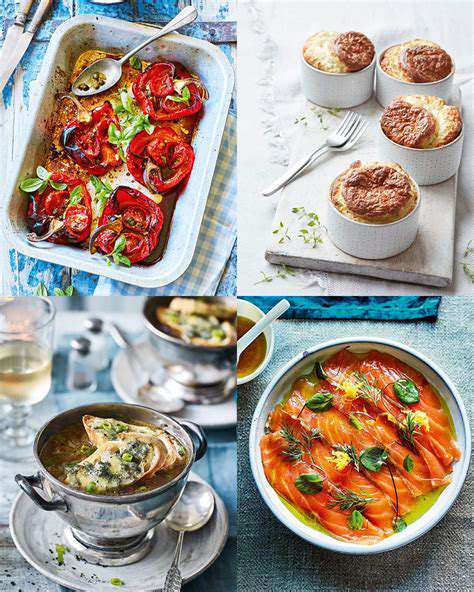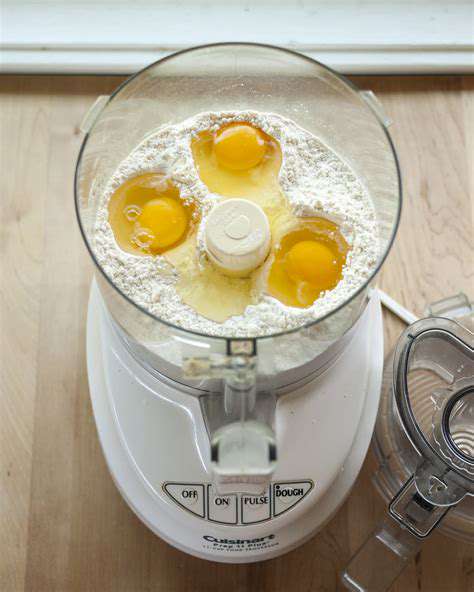Cooking with Food Processor: Quick and Easy Prep
Advanced Chop and Slice Techniques
Mastering a food processor requires more than basic chopping skills. With practice, you can achieve professional-level precision in slicing and julienning vegetables for salads, stir-fries, and garnishes. The key is experimenting with various blade attachments to control thickness and consistency. For instance, the shredding disc creates perfect textures for cheeses or vegetables, while the slicing disc produces paper-thin cuts for elegant presentations.
Many home cooks underestimate the versatility of their food processor's attachments. Beyond vegetables, these tools can transform meats into perfect strips for stir-fries or create uniform potato slices for gratins. Consistent cuts aren't just about appearance - they ensure even cooking throughout your dish. Try alternating between pulse and continuous modes to discover how different techniques affect your final results.
Expanding Culinary Horizons with Food Processor Recipes
This powerful appliance revolutionizes more than just prep work. It excels at creating smooth purees for soups, emulsifying sauces, and blending perfect doughs. Homemade pesto comes together in seconds, while hummus achieves its ideal creamy texture effortlessly. The processor's ability to incorporate air while mixing gives doughs a lightness that's hard to achieve by hand.
Consider unconventional uses that save significant time. Making pizza dough becomes a five-minute task, with the machine perfectly kneading the gluten while you prepare toppings. The same principle applies to breadcrumbs - what might take fifteen minutes by hand completes in thirty seconds. Batch processing ingredients for multiple meals can cut weekly prep time in half. This efficiency allows more focus on flavor development and presentation.
Beyond the Basics: Incorporating Food Processor in Your Daily Routine
Integrating this tool into daily cooking transforms meal preparation. Mornings become easier with pre-chopped smoothie ingredients, while evenings benefit from quickly processed vegetable sticks for healthy snacks. The real magic happens when you use it simultaneously for multiple components - chopping nuts for garnish while blending a sauce creates incredible efficiency.

Time-Saving Tips for Optimal Food Processor Use

Planning Ahead for Efficiency
Strategic meal planning reduces both time and waste dramatically. When you inventory ingredients before planning meals, you'll use existing items before they spoil while avoiding unnecessary purchases. Dedicating two hours on Sunday to prep vegetables, marinate proteins, and portion ingredients can save ten hours during the week.
Batch Cooking for Future Meals
Cooking in bulk delivers multiple benefits beyond time savings. Soups and stews made in large quantities freeze beautifully, while cooked grains store well for quick weekday meals. This approach not only conserves energy (both yours and your stove's) but also ensures you always have healthy options available. Leftovers transform creatively - yesterday's roasted vegetables become today's soup or frittata ingredients.
Utilizing Appliances for Speed
Modern kitchen tools offer game-changing efficiency. A quality food processor can reduce prep time by 80% compared to manual methods, while pressure cookers slash cooking durations for tough cuts of meat or dried beans. The key is learning each appliance's optimal uses - for instance, processors excel at emulsifications, while blenders create smoother purees.
Smart Shopping Strategies
Seasonal shopping at farmers' markets provides fresher ingredients at lower costs. Building your meal plan around what's in peak season ensures better flavor while reducing your grocery bill by 20-40%. Always organize your list by grocery store sections to minimize backtracking and unnecessary browsing.
Embrace Meal Swaps and Substitutions
Flexibility in ingredients prevents last-minute store runs. Understanding substitution principles (like using yogurt instead of sour cream) maintains recipe quality while adapting to what's available. Keep a well-stocked pantry with versatile staples that can substitute for fresh ingredients when needed.
Optimizing Storage and Organization
A systematic kitchen layout saves countless hours annually. Grouping items by frequency of use (daily essentials at front, occasional items behind) creates intuitive access patterns. Clear, labeled containers prevent the out of sight, out of mind problem that leads to food waste. Implementing the first in, first out rotation system ensures ingredients get used at peak freshness.

- Fluffy Pancakes from Scratch: Your New Weekend Ritual
- Exploring Vietnamese Cuisine: Flavorful Soups and Noodles
- Authentic Portuguese Custard Tarts: Pastel de Nata
- High Protein Smoothies: Power Up Your Day
- Vegetarian Dinner Party Ideas: Impress Your Guests
- Storing Coffee Beans for Brewing: Best Practices
- How to Store Apples Long Term: Cool and Dark
- Cooking with Electric Grill: Indoor Grilling
- Exploring Chinese New Year Foods: Symbolism and Recipes
- Cooking with Pressure Cooker Accessories: Expand Your Options
- Classic American Comfort Food: Hearty Chili Recipe
- Cooking with Fresh Herbs: Enhancing Flavor Naturally